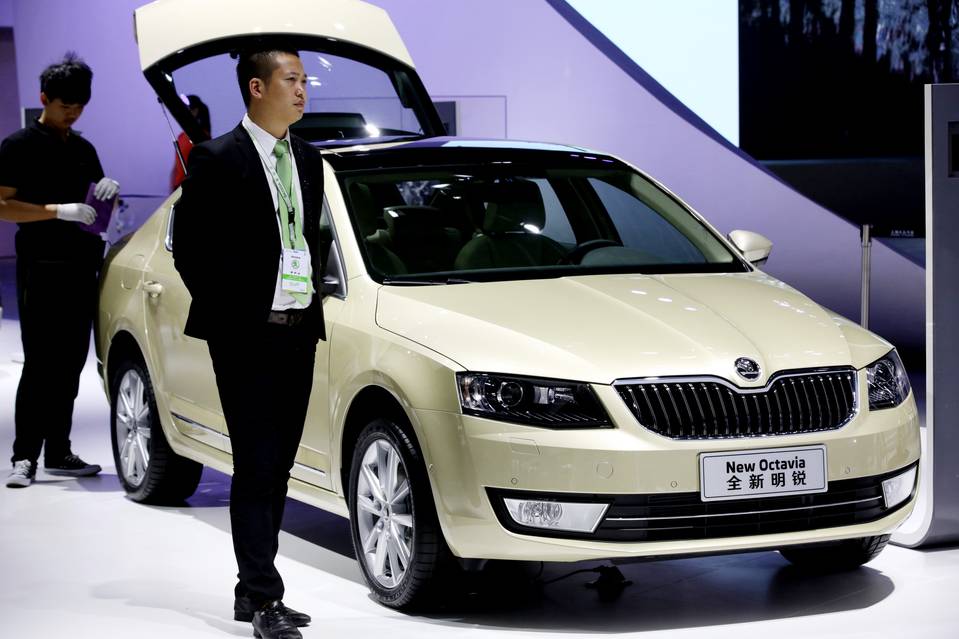SHANGHAI–China is giving a boost to its weakened auto industry, as a new government tax break in October spurred the biggest monthly sales jump so far this year.
Still, results for the first 10 months of this year suggest sales in the world’s largest car market will likely miss industry expectations, and are set to grow at their slowest pace in five years.
China sold 1.94 million passenger cars last month, up 13% from a year earlier, the government-backed China Association of Automobile Manufacturers said Wednesday. The gain was the biggest since December, when sales rose 16% year-over-year. In the January-to-October period, new car sales grew 3.9% to 13.3 million vehicles, compared with a 10% gain during the 10-month period a year earlier.
The Chinese government in late September slashed the 10% purchase tax in half on vehicles with engines smaller than 1.6 liters to rejuvenate the car industry. Nearly 70% of China’s new-car sales fall into the category that qualifies for the tax break, the auto-manufacturers’ group said.
 Before the announcement of the new tax policy, new car sales in the country had dropped for three consecutive months, prompting leading global auto makers such as General Motors Co. and Volkswagen AG to cut production to match sluggish demand in China, the centerpiece of their growth plans.
Before the announcement of the new tax policy, new car sales in the country had dropped for three consecutive months, prompting leading global auto makers such as General Motors Co. and Volkswagen AG to cut production to match sluggish demand in China, the centerpiece of their growth plans.
Auto executives had forecast 2015 sales in China would rise by a high-single-digit percentage, only to find a much tougher market, with demand battered by a deeper-than-expected economic slowdown and a roller-coaster stock market.
“The recently announced government incentive for vehicle purchases helped boost buying sentiment starting in October,” Matt Tsien, president for GM’s China operations, said last week, when GM China reported a 15% year-to-year rise in its sales for October.
Sun Shijing, a dealer for Chinese car brand Chery in Xinxiang, a county city in the central Henan province, said his sales last month were 20% greater than the average monthly volume in the first three quarters of this year.
“Our customers are mainly from rural areas. They are very sensitive to price changes,” said Mr. Sun. “With the tax break, they can save about 5,000 yuan for a 100,000-yuan-priced car. It’s not a small number, especially given the local economy is in the doldrums,” he said. One dollar is equivalent to 6.37 yuan.
Data from the auto-manufacturers’ group show that sales of cars with engines smaller than 1.6 liters grew 17% from a year earlier, four percentage points higher than the entire car industry.
The last time China lowered the tax for small cars was in 2009, when the global financial crisis took a toll on demand. That prompted a 53% surge in passenger-car sales that year, which helped China supersede the U.S. as the world’s largest auto market.
While a reprise of that jump is unlikely due to a much bigger base and a cooling economy, industry experts say that the incentive program will take some pressure off car makers.
John Zeng, managing director at LMC Automotive, said the consultancy firm forecasts a 5% rise in China’s new car sales this year, followed by an 8% increase in 2016. However, he said growth of new car sales will likely slow to 4.7% in 2017, when the tax break expires.
China’s new car sales growth dipped to 5% in 2011 when China dropped the tax incentive.
Major foreign car makers reported year-to-year sales gains for October in China. Nissan Motor Co. said its sales rose 17% from a year earlier, Ford Motor Co. posted a 7% rise and Daimler AG’s Mercedes-Benz Car reported a 43% surge.
Inventories at dealerships also continued to fall. The latest survey by the China Automobile Dealer Association of more than 20,000 dealers showed that their average inventory level was 1.42 months of sales in September, down from 1.5 months in August and 1.65 months in July. In China, analysts regard 1.5 as the “alert level” at which auto dealers should begin to be concerned about high inventory.
[“source-marketwatch”]





